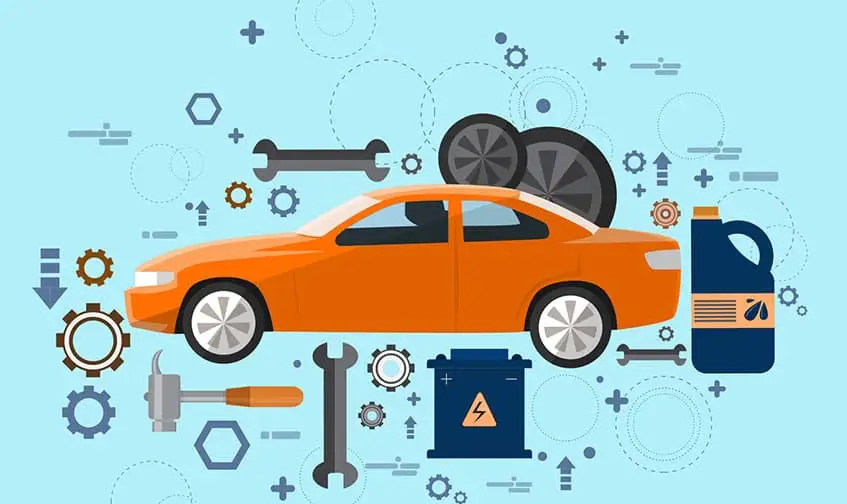Business
The Complete Checklist for Replacing Worn-Out Car Parts

Every vehicle owner knows that maintenance is part of keeping a car running smoothly, but it’s not always easy to tell when certain parts need replacing. While some components can last for years, others wear out faster due to frequent use, harsh conditions, or simple aging. Replacing parts before they fail completely can save time, money, and the frustration of unexpected breakdowns. Whether you’re handling maintenance yourself or scheduling professional service, knowing what to check—and when—is key to extending your vehicle’s life.
Essential Parts to Inspect Regularly
When creating your replacement checklist, start with the components most prone to wear. Some parts directly affect safety, while others impact comfort and convenience. Lighting, brakes, and electrical systems are among the first areas to examine.
Your vehicle’s headlights are one of the most critical parts to inspect regularly. Over time, bulbs can dim, lenses can cloud, and wiring can deteriorate, reducing visibility on the road. Driving with dim or non-functional headlights not only compromises your safety but also increases your risk of receiving a traffic citation. If your headlights appear foggy or yellowed, try cleaning the lenses with a restoration kit before opting for full replacement. Always replace bulbs in pairs to maintain even lighting and consistent brightness.
Brakes are another essential system to monitor. Worn pads, warped rotors, or leaking brake fluid can drastically reduce stopping power. You should inspect your brake pads every 10,000 to 15,000 miles or at least twice a year. Listen for squealing or grinding noises, and don’t ignore dashboard warnings related to braking performance.
Next, pay attention to your vehicle’s belts and hoses. These components work quietly under the hood but play crucial roles in powering your alternator, air conditioning, and cooling systems. Look for cracks, fraying, or bulges—signs that a belt or hose is nearing the end of its life. A snapped belt can cause immediate engine failure, while a leaking hose can lead to overheating.
Tires and suspension components are also common wear items. Check for uneven tread wear, low pressure, or vibrations while driving. Rotate your tires regularly and replace them once tread depth reaches 2/32 of an inch. Failing to do so can reduce traction, especially in wet or icy conditions.
Even small parts inside the cabin deserve attention. The turn signal switch, for example, might seem like a minor control, but it’s essential for communicating with other drivers. A failing signal switch can result in intermittent or nonfunctional blinkers, increasing your chances of an accident. Replacing it ensures your vehicle remains compliant with safety standards and keeps you visible on the road.
How to Plan a Cost-Effective Replacement
Replacing car parts doesn’t always have to drain your wallet. With the right strategy, you can plan ahead, budget effectively, and avoid emergency repairs. Start by tracking your vehicle’s service intervals and mileage-based replacement recommendations. Many modern cars include maintenance reminders, but keeping your own log ensures you stay proactive.
When planning replacements, prioritize critical systems—such as brakes, lights, and steering—over cosmetic or nonessential items. These are directly tied to your safety and the vehicle’s reliability. It’s also smart to group related repairs together. For example, if you’re replacing your rotors, do the brake pads at the same time. If your mechanic is already removing parts for one repair, combining jobs can save on labor costs.
DIY repairs can also help you save money if you’re comfortable working on your vehicle. Tasks like replacing wiper blades, cabin filters, or bulbs are straightforward and require minimal tools. However, for electrical components, make sure to follow proper safety steps and disconnect the battery when necessary.
Your car’s power accessories—like windows and locks—also wear down with age. A malfunctioning power window switch is a perfect example. When it fails, you may find yourself unable to roll windows up or down, which can be more than inconvenient during bad weather. Thankfully, replacing the switch is a relatively quick and inexpensive fix that restores comfort and function.
Another cost-saving strategy is to invest in quality replacement parts instead of cheap alternatives. While budget-friendly options may seem tempting, they often wear out faster or fail prematurely. OEM or reputable aftermarket parts generally provide better performance and longevity.
Finally, don’t forget preventive maintenance. Regularly changing fluids, filters, and spark plugs helps reduce strain on other systems, delaying the need for major replacements. Setting aside a small monthly amount for car care expenses can make unexpected repairs far less stressful.
Final Thoughts
Replacing worn-out car parts doesn’t have to be overwhelming when you have a clear plan in place. Regular inspections, smart budgeting, and timely replacements help prevent small problems from becoming costly repairs. From headlights and turn signal switches to the power window switch, each component plays a role in keeping your car safe and functional. By staying ahead of maintenance and addressing wear before it turns into failure, you’ll ensure your vehicle runs smoothly for years to come.
-

 Celebrity12 months ago
Celebrity12 months agoWho Is Mindy Jennings?: All You Need To Know About Ken Jennings Wife
-

 Celebrity1 year ago
Celebrity1 year agoWho Is Jennifer Rauchet?: All You Need To Know About Pete Hegseth’s Wife
-

 Celebrity1 year ago
Celebrity1 year agoWho Is Enrica Cenzatti?: The Untold Story of Andrea Bocelli’s Ex-Wife
-

 Celebrity1 year ago
Celebrity1 year agoWho Is Klarissa Munz: The Untold Story of Freddie Highmore’s Wife
















